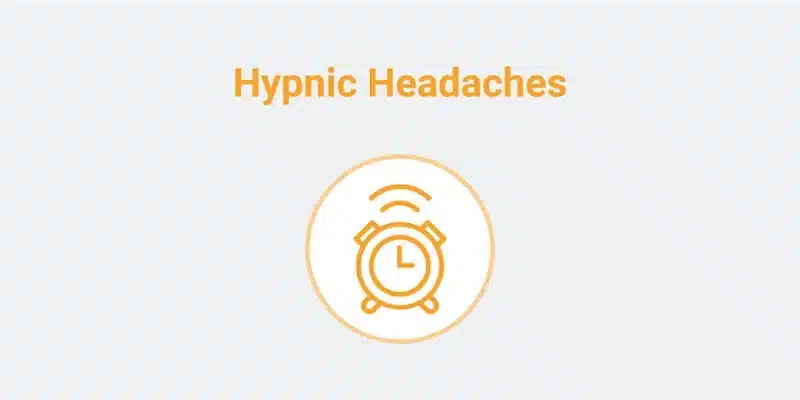
Article topic: Hypnic Headache
Authors: Wendy Saliba and Ali Hijazi
Editors: Odette El Ghawi, Joseph Akiki
Reviewer: Ethar Hazaimeh
Keywords: Hypnic headache, hypothalamus, ICDH-3, secondary causes, caffeine.
Abbreviations: Hypnic Headache (HH), International Classification of Headache Disorders, 2nd edition (ICHD-2), International Classification of Headache Disorders, 3rd edition (ICHD-3), Magnetic Resonance Imaging (MRI), non-steroidal anti-inflammatory drug (NSAID).
Abstract
Background: Hypnic headache (HH), first reported by Raskin in 1998, is a rare primary headache disorder otherwise known as “alarm clock headache”. It is distinguished by headache attacks regularly developing and recurring during night sleep.
Objective: This paper summarizes current knowledge on HH including clinical characteristics, diagnosis and therapeutic options, addressing secondary HH as well.
Methods: A literature review search was done which studied eight articles covering Hypnic Headache primarily through PubMed and Google scholar databases.
Results: HH primarily affects the elderly, with an average age of onset of around 50. New diagnostic criteria have been established according to the International Classification of Headache Disorders, 2nd edition (ICHD-2) and 3rd edition beta (ICHD-3beta), but only after excluding other causes of primary or secondary headaches. Although randomized controlled trials for both acute and prophylactic treatments are lacking, caffeine remains the most effective and safest option.
Conclusions: HH predominantly affects elderly patients, though young patients are not excluded. Various causes of primary headaches, such as migraine and cluster headache, as well as multiple causes of secondary headaches, must be ruled out in order to diagnose HH. Hypothalamic dysfunction has been shown to play a role in the pathophysiology of HH, and a strong cup of coffee appears to be the best acute treatment and prophylaxis.
Introduction
Hypnic headache (HH) is a rare primary headache disorder that was first reported by Raskin in 1998, who described it as a headache syndrome affecting elderly patients during sleep at night [1,2]. However, it wasn’t until 2004 that HH was included in the International Classification of Headache Disorders, second edition (ICHD-2) [2,3]. In 2013, the ICHD-3 updated the diagnostic criteria for HH, making them more reliable for clinical research, as they were based on evidence [1].
HH attacks typically occur at the same time each night, causing patients to wake up at least 15 days per month. The attacks last from 15 minutes to 4 hours, without agitation or autonomic symptoms [2]. While HH primarily affects elderly patients, it can, though rarely, occur in children and adolescents. The pathophysiology remains poorly understood, although hypothalamic dysfunction is thought to play a role [1-3]. Additionally, secondary headaches result from underlying medical or neurological conditions, so ruling out secondary causes is crucial when diagnosing primary HH [2].
Etiology and pathogenesis
The pathophysiology of hypnic headaches (HH) remains poorly understood, though several insights suggest a connection to hypothalamic dysfunction. HH attacks predominantly occur during sleep, implicating hypothalamic structures due to their role in regulating circadian rhythms and sleep-wake cycles [2,4].
Primary Hypnic Headache
Although the precise etiology of primary HH remains unclear, theories suggest that dysfunction in hypothalamic regulation of circadian rhythms and melatonin levels may contribute to the disorder. The anterior and posterior hypothalamus may decline in function with age. This decline, particularly in the suprachiasmatic nucleus, could lead to abrupt awakenings and subsequent pain-triggering events during sleep [5]. Imaging studies, such as MRI, have shown a reduction in grey matter volume in pain-related areas of the posterior hypothalamus, which aligns with the circadian periodicity of HH [2,4,5].
Secondary Hypnic Headache
Secondary HH can arise from underlying medical or neurological conditions.
Brain tumors, particularly those affecting the posterior fossa or hypothalamic regions, may present with symptoms similar to HH, necessitating neuroimaging for accurate diagnosis. Obstructive sleep apnea (OSA) is another potential secondary cause, as nocturnal hypoxia associated with OSA can trigger headaches [3,6]. Hypertension has also been linked to HH, with attacks potentially resolving following appropriate antihypertensive therapy, though they may recur if medication is paused [2]. Metabolic disturbances, such as hypoglycemia following prolonged hypoglycemic diets, have been reported to trigger HH attacks, with dietary adjustments providing relief [2]. Furthermore, medication overuse and withdrawal are additional secondary causes, making a thorough medication history essential for identifying possible contributions to HH [2].
This integrated understanding of the pathogenesis and etiology of HH underscores the complexity of the disorder and highlights the need for further research to elucidate its mechanisms and refine treatment strategies.
Clinical presentation
For a diagnosis of HH, patients must experience attacks that wake them up during the night. Patients can experience one or more attacks per night, with subsequent attacks only occurring after they have fallen asleep again. The first attack typically occurs between 2 AM and 4 AM, and further attacks are more likely to happen after 4 AM. In some cases, up to six attacks in a single night have been documented [2,3]. Each attack typically lasts between 15 minutes and 4 hours.
The pain can present as either unilateral or bilateral [1-3]. While initially described as dull, patients have also reported the pain to be throbbing, pulsating, sharp, stabbing, or burning [1-3]. Despite the pain, patients with HH can often engage in motor activities such as walking, reading, or even taking a shower during an attack, which contrasts with the behavior of migraine sufferers, who tend to seek rest. Additionally, unlike patients with cluster headaches, who often exhibit significant restlessness, those with HH typically do not [2,3].
While HH lacks the prominent autonomic symptoms seen in cluster headaches, mild trigeminal-autonomic features such as lacrimation, ptosis, and rhinorrhea have been reported during HH attacks [2,3].
Diagnosis
When diagnosing primary hypnic headache (HH), it is crucial to first exclude other primary headache disorders, particularly migraine, cluster headache, and tension-type headache, as these conditions can present with overlapping clinical features [3,6]. Since clinical examination is typically normal in HH and these other disorders, a detailed medical history is essential for accurate differentiation [6]. Additionally, the potential for comorbidity must be considered, as patients may experience multiple headache types concurrently.
In addition to excluding other primary headaches, secondary causes of HH must also be ruled out to ensure an accurate diagnosis. Diagnosing secondary hypnic headaches (HH) involves a targeted approach to identify and address underlying conditions that may contribute to headache symptoms. Neuroimaging, including MRI, is crucial for excluding structural abnormalities such as brain tumors that could present with headache symptoms mimicking HH. For patients suspected of having OSA, polysomnography is the gold standard for diagnosis, as it can reveal nocturnal hypoxia and sleep disturbances that may trigger headaches [3,6].
In cases where secondary HH is linked to systemic conditions like hypertension, blood pressure monitoring and management become integral. Effective treatment of hypertension often alleviates HH symptoms, highlighting the importance of addressing systemic factors. Additionally, evaluating metabolic disturbances through glucose monitoring may identify hypoglycemia or other imbalances that could precipitate HH attacks. For patients with a history of medication use, a thorough review of their medication regimen is essential to rule out overuse or withdrawal effects, which can also contribute to headache patterns [2].
According to current case reports, the diagnostic criteria outlined in the International Classification of Headache Disorders, third edition (ICHD-3), have demonstrated greater sensitivity in diagnosing HH compared to the second edition (ICHD-2), making it a more reliable tool for clinical diagnosis [2,3]. This highlights the importance of adhering to updated diagnostic guidelines when evaluating patients with nocturnal headache presentations.
| ICDH-2 | ICDH-3beta |
| A. Dull headache fulfilling criteria B-D | A. Recurrent headache attacks fulfilling criteria B-E |
| B. Develops only during sleep, awakens patients | B. Develops only during sleep, awakens patients |
| C. Is characterized by at least two of the following:
. occurs> 15times/ month . lasts>/15minutes after awakening . first occurs after age 50 years |
C. Occurs >10 times/month for >3months |
| D. No autonomic symptoms and no more than one of: nausea, photophobia or phonophobia | D. Lasts >/ 15min and up to 4 hours after awakening |
| E. Not attributed to another disorder | E. No cranial autonomic symptoms or restlessness
|
| F. Not better accounted for by anotherICDH-3 diagnosis |
|
|
|
Table 1: Table showing the ICDH-2 and ICDH-3 beta diagnostic criteria of hypnic headache [1].
Differential diagnosis
When evaluating hypnic headache (HH), it is essential to consider other primary headache disorders and conditions that may present with overlapping features, as accurate differentiation is key to appropriate management and treatment.
Migraine
While migraine often presents with associated symptoms such as nausea, vomiting, photophobia, and phonophobia, these are typically absent during HH attacks. Furthermore, migraines generally present as unilateral, pulsating pain, while HH can present as either unilateral or bilateral, with a tendency toward bilateral pain. Another key distinction is age: migraine commonly develops in adolescents and young adults, whereas HH predominantly affects individuals over the age of 50 [6].
Cluster Headache
Differentiating between cluster headache and HH can be challenging, as both conditions can occur during the night and disturb sleep. However, CH is characterized by significantly more severe pain, typically unilateral, and accompanied by prominent cranial autonomic symptoms such as lacrimation, conjunctival injection, rhinorrhea, and ptosis—symptoms that are generally absent in HH [6]. Additionally, CH attacks are typically shorter, lasting 15 to 180 minutes, and are associated with restlessness and agitation, in contrast to HH, where patients remain relatively calm.
Tension-Type Headache
Tension-type headache (TTH) is typically characterized by bilateral, pressing, or tightening pain. However, TTH rarely causes patients to wake from sleep, which is a hallmark of HH. HH attacks are shorter and more intense compared to TTH, where the pain tends to be mild to moderate and can last anywhere from 30 minutes to 7 days [6]. Additionally, TTH lacks the nocturnal pattern that is central to HH.
Obstructive Sleep Apnea
Although not a primary headache disorder, obstructive sleep apnea (OSA) can present with morning headaches due to nocturnal hypoxia. These headaches are typically dull and diffuse, without the distinct circadian pattern seen in HH. Polysomnography can help differentiate HH from OSA in cases where sleep disturbances are suspected to contribute to headache.
Paroxysmal Hemicrania
Paroxysmal hemicrania (PH) is a rare headache disorder characterized by severe, unilateral pain with cranial autonomic symptoms similar to CH. However, PH differs from HH in its shorter attack duration (2 to 30 minutes) and its excellent response to indomethacin, a diagnostic criterion that HH does not meet.
Trigeminal Neuralgia
Trigeminal Neuralgia (TN) presents as short, sharp, electric shock-like pains typically triggered by sensory stimuli. Unlike HH, TN is not associated with sleep disruption or a regular nocturnal pattern, and the pain is usually unilateral, confined to the distribution of the trigeminal nerve.
Management and treatment
Addressing and managing headache disorders is complex and requires a comprehensive assessment. For the management of hypnic headache (HH), randomized controlled trials are lacking [1-4]. Consequently, treatment recommendations are derived from observational studies and need further validation. Additionally, since most HH patients are elderly and present with comorbidities, adverse effects are a significant concern in the treatment of HH, alongside efficacy [1].
Acute treatment options
On one hand, most hypnic headache (HH) attacks experienced by patients are mild to moderately severe and spontaneously remit within hours without the need for treatment. On the other hand, some HH attacks may be prolonged and severe, necessitating acute management [1].
The most effective acute treatment currently available is caffeine or caffeine-containing analgesics [1-3]. When awakened by a headache, a cup of strong coffee has been shown to provide significant relief as an acute therapy [2]. Given that most patients experience HH attacks several days per month, it is important to be aware of the potential side effects associated with analgesics, such as gastrointestinal bleeding and liver damage. Therefore, coffee alone is often preferred as the acute remedy [2].
| Agent | Dose |
| Caffeine
Caffeine containing analgesics |
One cup of coffee (containing around 200mg caffeine)
100mg caffeine |
Table 2: Table showing acute agents with best effect on HH [2].
Prophylactic treatment options
Caffeine is considered to be the main therapeutic agent for HH. Not only has it shown benefits in acute treatment but can also be used as a preventive agent [1-4]. A cup of strong coffee can be administered right before sleep and is effective. Is it a safe option, however, many patients complained of having sleep problems as a result of this therapy [1,2].
Lithium, first highlighted by Raskin et al., represents another prophylactic option. Lithium carbonate is frequently used, with an effective dosage ranging from 150 to 600 mg per day, either as a single or divided dose, aiming for a serum level of 0.5 to 1.0 mmol/L [1-4]. Its mechanism involves modifying melatonin levels, upregulating serotonin release, and downregulating serotonin receptors in the hippocampus [2]. Despite its benefits, lithium treatment is often limited by significant side effects such as cardiotoxicity, kidney failure, electrolyte imbalances, and hypothyroidism, particularly in elderly patients. Regular monitoring, including ECGs, and renal and thyroid function tests, is crucial [2].
Indomethacin, a non-steroidal anti-inflammatory drug (NSAID), offers another prophylactic approach. Known for its robust inhibition of prostaglandin synthesis, indomethacin is typically administered at a dose of 25 to 150 mg at bedtime [2,4]. Its ability to cross the blood-brain barrier more effectively than other NSAIDs enhances its therapeutic potential [2]. Nevertheless, caution is required when prescribing indomethacin to elderly patients due to its potential side effects [1,2,4].
Melatonin, a neurohormone regulated by the hypothalamus and produced in response to darkness, has shown promise in treating HH. In elderly patients, melatonin has achieved about a 50% response rate with doses ranging from 2 to 5 mg, and it has also been effective in pediatric cases [2]. However, melatonin’s efficacy appears to be less pronounced compared to lithium, which influences melatonin secretion [2].
| Agent | Dose |
| Caffeine | One cup of strong coffee containing around 200mg caffeine
Caffeine containing analgesics 100-200mg |
| Lithium | 150 mg/night up to 600mg intended serum level 0.5-1 mmol/l |
| Indomethacin | 25-150 mg/night |
| Melatonin | 2-5 mg/night |
Table 3: Table summarizing prophylactic agents with best effect on HH [2].
Each of these prophylactic options offers different benefits and limitations, necessitating careful consideration and individualized treatment plans based on patient-specific factors and potential side effects.
References...


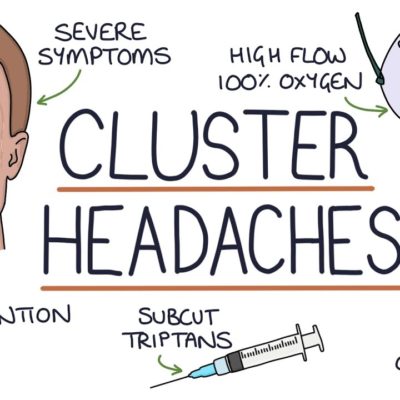



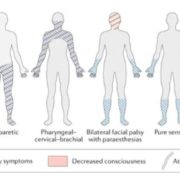
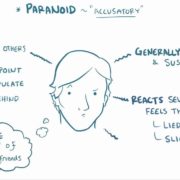

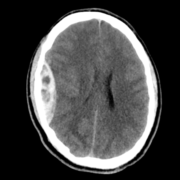
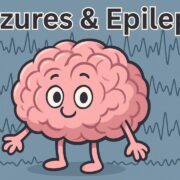
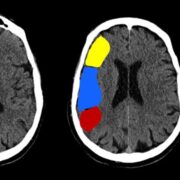
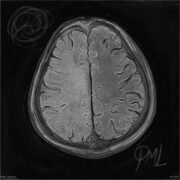


This article is an excellent resource for understanding hypnic headache (HH). Overall, it’s a valuable contribution to the literature that emphasizes the need for further research.
Well done on a well-thought-out exploration of this important topic!
Very interesting article. Well done!
Great!